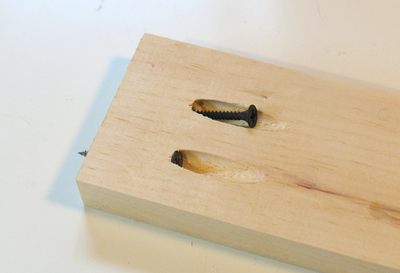First coat I used the 2 inch angled brush on the corners, then a 4 inch foam roller on the flat parts. No worries, the first coat always looks a bit thin - see the board above the window.
Same method of paint the backs and drawers, let them dry while painting the cabinets, wait another hour until dry to the touch (who am I kidding, I needed to finish an episode of Home Fires - put that on your watch list), flip the doors, paint the fronts, let dry overnight.
At this point was when I realized how many gaping holes now looked even more obvious, like between two cabinets, or between cabinet and ceiling, so I ended up taking another day to caulk
 |
| #fixme #needcaulk |
I learned that you can lay a layer of caulk in a gaping hole, let it dry then go back and add in some more and then smooth it out, almost building a wall.
I also learned that you really need to smooth it out and take all the excess off as there are some areas where in certain light you can tell that there's some extra caulk around a seem that should have been taken off, either when smoothing it out, or after with sanding.
Finally, I learned that you should caulk before you paint anything. Whoops!
On to the second coat. Do a really light sand with at least 120 grit sandpaper if not 220 grit. Use a tack cloth to get all the dust off (especially if you've also had electricians working in the area who made some dust). The first corner coat with the brush left streaks so I used the end of the foam roller in the corners to try and get more paint on it and only have to do 2 coats, then roll the flat surfaces. Still didn't work and in certain lights you could tell it wasn't complete. So a few days later (delayed by my dance school's feis weekend) I found a 1 inch Purdy brush in my collection and carefully painted the insides of the groves again with a decent amount of paint. Looks better. Just be careful around those corners for drips and pools of paint.
A day later we noticed that the sides needed a bit more coverage, and so back I went with that one inch brush. So now, a week later, I think we can finally put the doors on tomorrow (Monday - three weeks after the start of the project). Granted, humidity and massive rain storms haven't helped, even with keeping the AC on and aiming fans on the drying paint. #thanksDCsummer But, for about $250 in paint and other needed parts, plus my hours of labor...well worth it.
Here's the current look sans doors.
With family coming in, and to have a bit more functional of a kitchen we put the drawers back in, but didn't fully tighten the handles so the paint could continue drying and curing. (Man that seems to take FOREVER!)
Here's the side by side...see how much lighter it is?
 |
| #lightandbright #success |
 |
| Looking up into the hole behind the cabinet |
 |
| Still needs a bit of work, but better than the wires sitting on the counter |
Now to just get those doors back up.





































